Someone forwarded us this newspaper article today. Thanks to Google Translate, we learned that new rules will be applied to nude beaches in the German region Rostock, making it illegal to wear anything but your birthday suit. This decision is part of a new set of beach rules for the area, which is no less than 23 pages long. Obviously, the very first thought that shot through our heads was “WTF??? 23 PAGES OF RULES?“
For a second, we wanted to try to find those pages and see what else was in there, but then figured that this would probably just make us feel miserable. So instead, we dove a bit deeper into that one rule that bans speedos, trunks, board shorts, bikinis, and if we understood well, even monokinis from designated sections of the area’s 19-kilometre-long coastline.
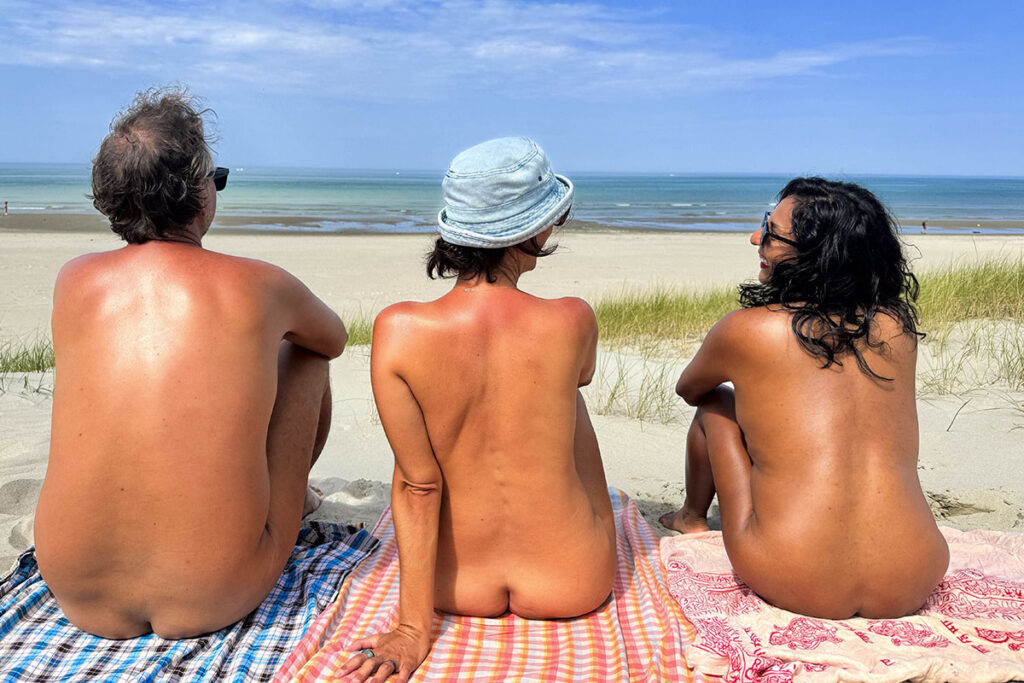
The people decided
What happened is that in recent years, there has been an increase in complaints about clothed people on nude beaches. Apparently, this became such an issue that the local government asked their residents to vote on the question “Should nude beaches be exclusively nude?”. And the people said “Yes!”.
This can be considered a big win. Not just for the regulars at those beaches but for German naturism in general. A while ago, it was all over the news that naturism in Germany, the birthplace of the European clothes-free movement, was dying. But look at this, at least in this one place on the Baltic coast, the general population doesn’t just think that nudists deserve their own spaces, but also that every other person who wants to be there needs to adjust to the dress code.
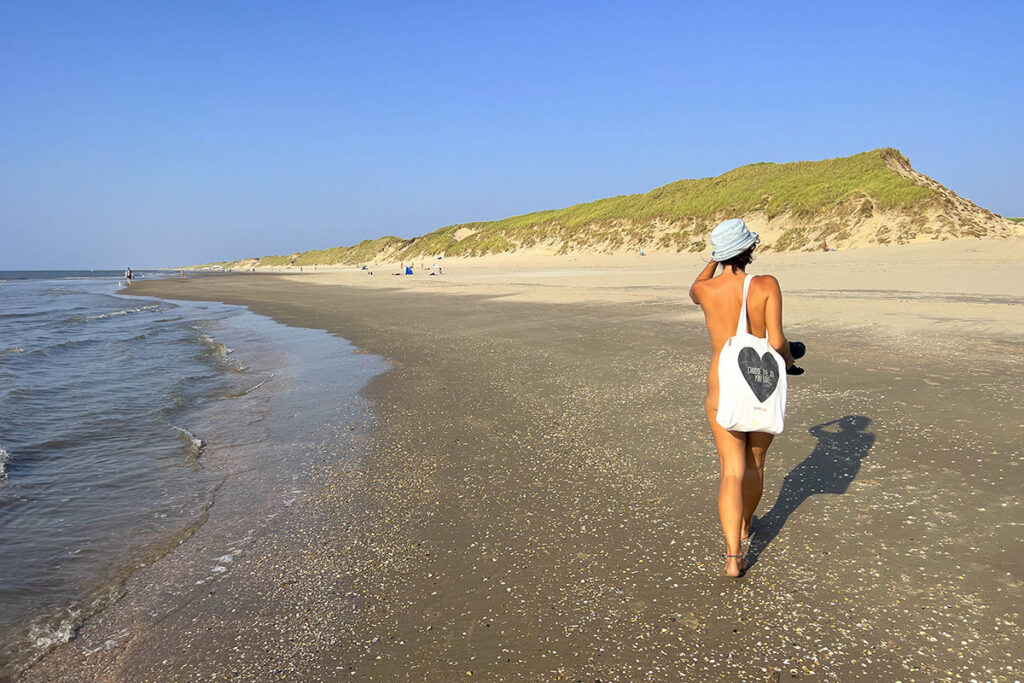
You win some… you lose some…
In another article, we read that there had also been counter-complaints, about people who like to get naked on beaches that aren’t designated nude beaches. Often in the so-called “grey zones”, the roughly 50 or so meters before you reach the actual sign indicating the start of the nude zone.
We don’t know the actual truth. From experience, we know that newspapers often like to prioritize the story over the facts, but since those 23 pages of rules apparently also include a ban on nudity outside the designated nude zones, it feels like there may have been a deal on the table. No clothes inside the nude zone, no nudity outside of it.
This makes us wonder whether this new rule is actually such a good thing. Doesn’t it mean that the Rostock beaches are also losing parts where nudity might have also been quite common? Unofficial nude beaches, so to speak.
We haven’t been naked on the Baltic coast yet, but now it’s definitely on our radar. If you know the place already, we would appreciate it if you could share some of your own experiences in the comments section.
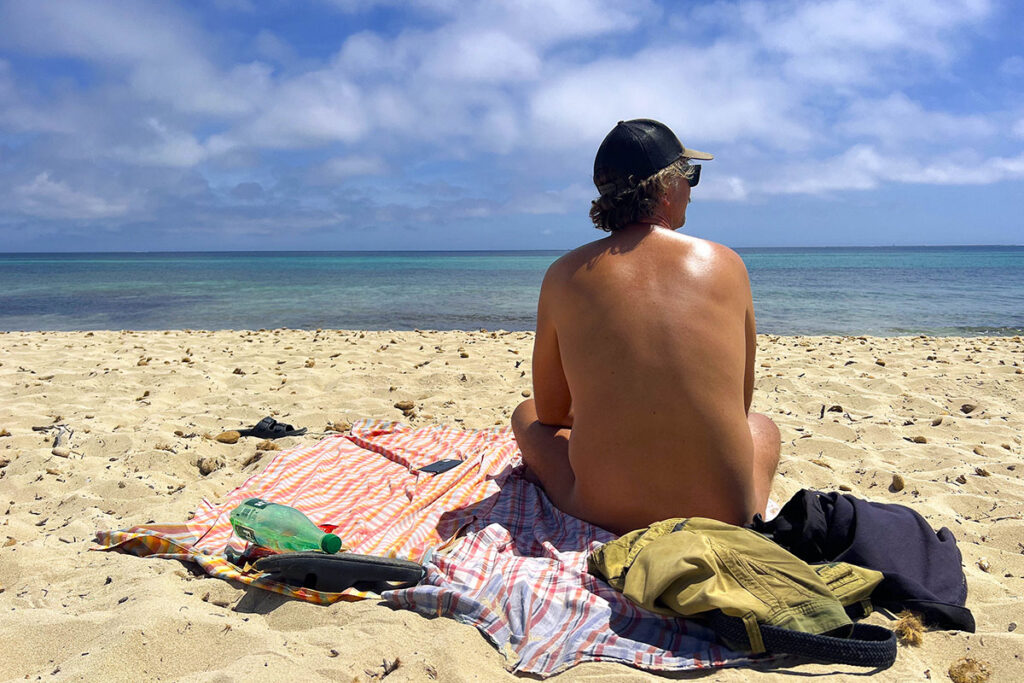
What we learned from the cave people
Funny enough, we had been talking about the rumour that German naturism was dying just the other day. Currently, we’re on La Gomera, one of the lesser-known of the Canary Islands. Well, lesser known in most parts of the world except for Germany because in recent days we regularly heard more German in the streets than Spanish.
La Gomera is clearly a rather popular tourist destination in Germany, specifically for a younger, alternative crowd. We have met a number of the local “cave hippies”, who are typically between 20 and 45 years old, German-speaking, and in strong disagreement with worldwide politics. So they move for several months to sometimes years into a cave on the coast of this island.
The beaches near their caves are generally considered nude beaches because nudity can be seen all around. As there are no laundromats in these caves, clean clothes are probably scarce and if you can avoid wearing them, like on sunny 25°C winter days, it is probably advisable.
We absolutely loved this. Not just because we enjoy hanging out with people who like to challenge the status quo, but also because we don’t often have the chance to spend time on nude beaches where the large majority is pretty much our age. Nevertheless, these people are not nudists and are most often found in very different states of dress and undress. They have no problem with being nude or seeing nudity, but they have a problem with rules. If the government of La Gomera would decide to make these beaches mandatory nude (or clothed), they’ll probably leave the next day.
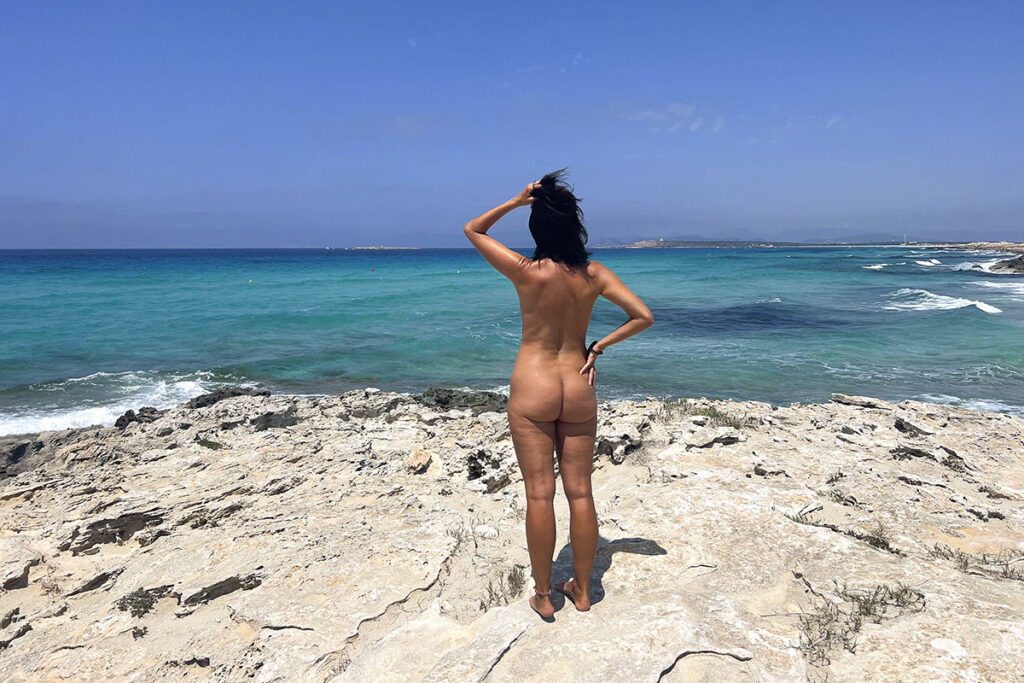
Obligatory nude, the pros and cons
If you have been following this blog for a while, you may already know that we are fans of the clothing-optional concept. It creates a welcoming environment, lowers the step for people who are curious about nude beaches, and allows us to comfortably go to the beach with our none nudist friends. But even more importantly, by not requiring exclusive beaches, we think that this creates opportunities to get more beaches where bathing suits are not a requirement.
But we also know that this is easy for us to say. When we end up at a beach that’s supposed to be a nude beach but everyone else is clothed, we can turn around and go to the next beach. But if this happens at your local nude beach, we understand that it’s really annoying. In fact, this too is a common thing in Spain. Because of the Spanish laws, it’s legal to be nude on pretty much every beach. During the low season, this is also quite possible. You just go to any given beach, walk a bit away from other people and get naked.
During high season, however, it’s a completely different story. Not only are all the popular beaches packed like sardines in speedos, trunks, board shorts, and bikinis, but these also move towards the otherwise relaxed coves. And towards the beaches that are actually considered nude beaches. We have been to nude beaches in Spain during the high season, and unfortunately, we must admit that we very well understand how the nudists of Rostock must have felt.
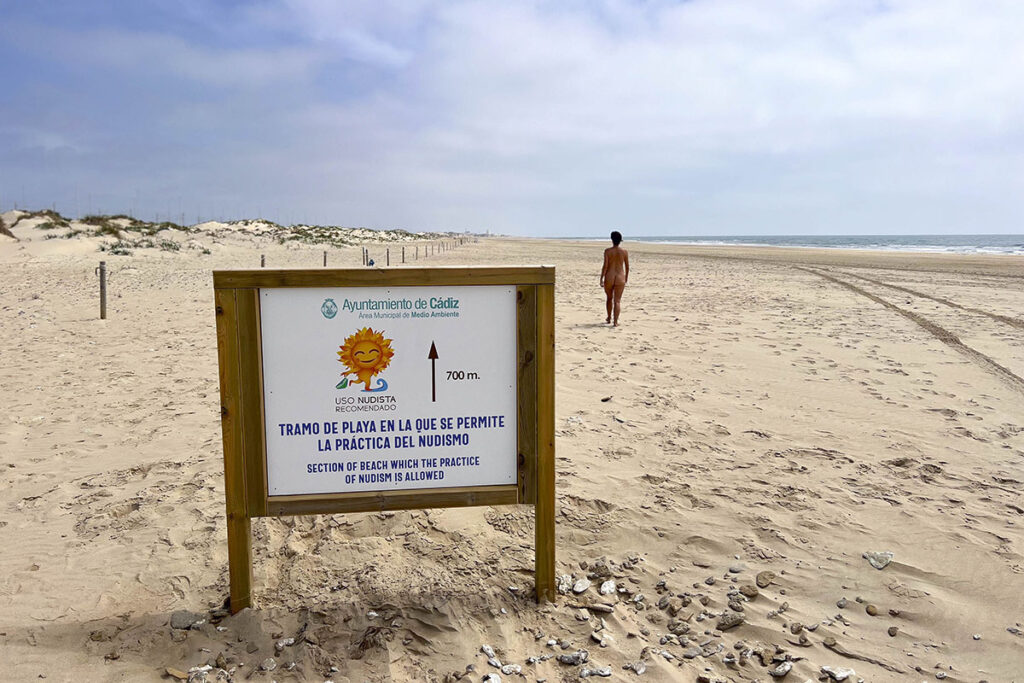
Nudity recommended
So what is the solution here? How can we avoid nude beaches getting overcrowded with bathing suits but still remain welcoming to newbies, to our non-nudist friends, and to our new alternative friends?
We believe that the key is in education. Today, most nude beaches are marked with signs saying “nude beach”, “FKK beach”, “nudist zone”, or something like that. But what do those signs mean? To us, it’s simple, it means that you’re supposed to be naked. To others, who don’t know anything about the nudist culture and the struggles we have with keeping our beaches nude, it may mean something completely different. They might see it as a warning sign, “From this point, you may see nude people” or just as an indication that it’s allowed to be nude. If they have no issues with the sight of a couple of nude bodies, they may not see any reason to turn around or get naked as well.
In short, we think that most nude beach signs suck at getting the message across. So why not put info signs instead, like the ones you find in nature parks? But instead of reading about some local plant or bird, you will be getting a brief history about how this beach has become a nude beach, about the nudist culture, and about how you can contribute to the vibe by getting naked as well.
Of course, creating such signs would take time and effort, but we’re pretty sure that it will be faster than putting together 23 pages of beach rules.

Support Naked Wanderings
Do you like what we do for naturism and naturists?
Did we make you laugh or cry?
Did we help you find the information you were looking for?
Then definitely join our Patreon community!


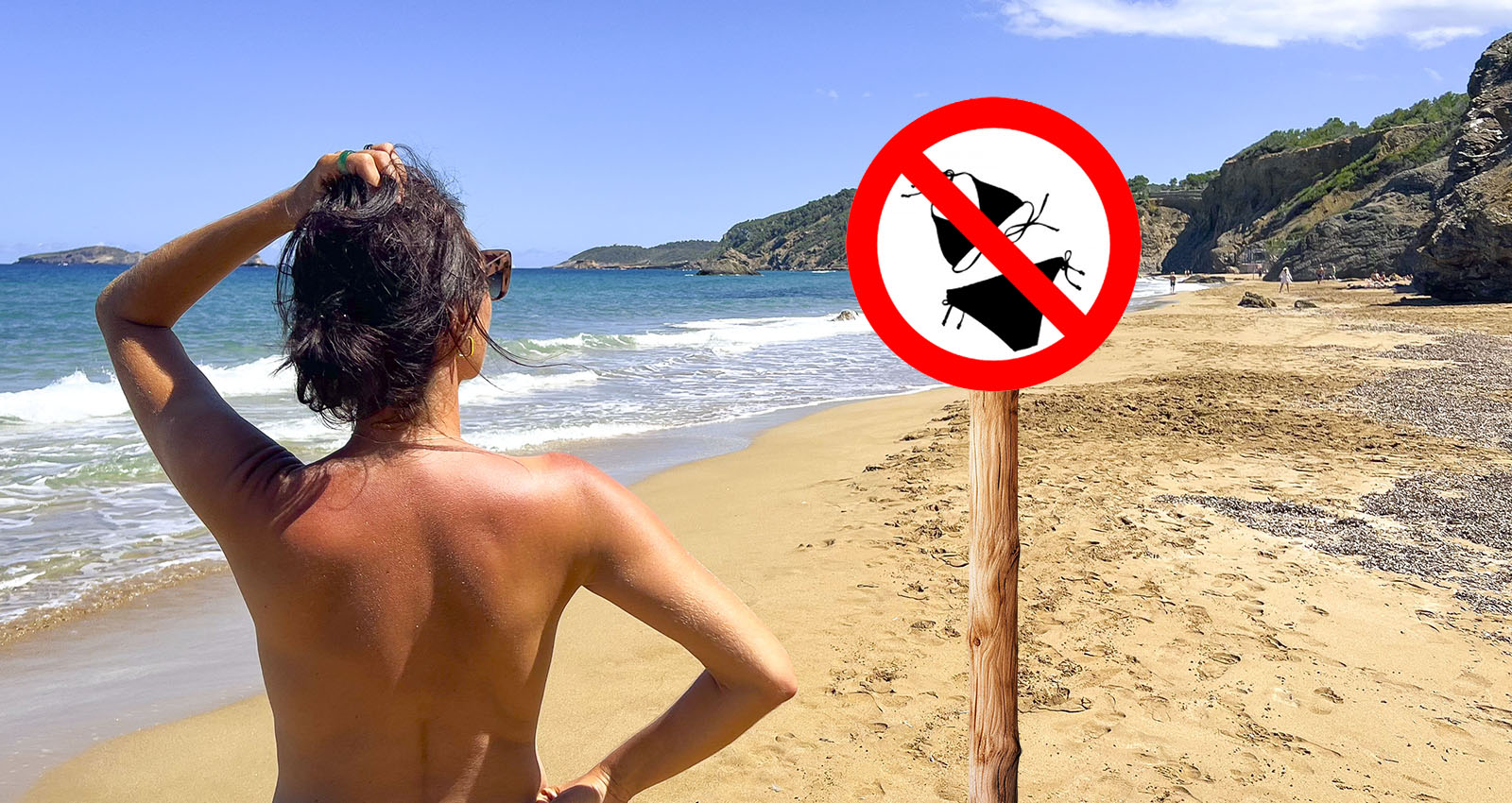


Certainly a complicated problem. Since so many areas forbid nudity, I would feel that we should have areas that forbid clothes! Ideally though, EVERYWHERE should be clothing optional!!! The big problem, of course, is the group that is against ANY public nudity, and unfortunately that group is the majority and very zealous!
You’re absolutely right.
We believe in a system of designated nude obligatory beaches and clothes obligatory beaches, but where all other beaches are clothing-optional.
In this case, we’re afraid that by designating the nude obligatory beaches, they are making every other beach clothes obligatory by default.
I think it’s great that there areas on beaches set aside for those who prefer everyone to be nude. For fairness, there should also be some other spaces where clothing or swimsuits are required. Every where else should be entirely optional. There is demand for all three models,
Exactly, that’s our idea as well.
Unfortunately, by designating nude obligatory beaches, all other beaches often become clothes obligatory by default.
I was sorry reading this news. Rostoc authorities decided to ban one another piece of land to “the others” and to support this way even more social tensions, prejudices and troubles.
The world is turning right it seems.
I have read into the details.
The official reason is fine – to keep onlookers and other troublemakers at bay. If there is an argument it’s decided in favor of the naturist by default, similar way as it would be decided in favor of a textile person elsewhere.
This way it does not look that bad.
There are indeed different ways to look at this, and different people like different things. We’ve met quite a lot of naturists for whom the wall around the resort can’t be high enough. They want to be in their own cocoon and don’t care that this encourages the taboo. Others believe that allowing people to have a look will normalise nudity in the long run and might help creating more public spaces.
There’s no right or wrong here, just different oppinions. But to accommodate all, we believe that next to nude obligatory and bathing suit obligatory beaches, there should also be clothing-optional beaches.
“There’s no right or wrong here”. True, I myself swayed back and forth 🙂
The perfect world could include CO by default plus special, designated areas for less tolerant people, who cannot stand the other option nearby.
As an experiment on local isolated section of the beach this initiative is pretty valuable.
Exactly!
Absolutely! “So why not put info signs instead, like the ones you find in nature parks? But instead of reading about some local plant or bird, you will be getting a brief history about how this beach has become a nude beach, about the nudist culture, and about how you can contribute to the vibe by getting naked as well.”
Wat ons meestal doet rechtsomkeer maken op de (soms lange hete) weg naar het afgelegen ‘naakt’ naaktstrand of alsnog voor een luxe naturisten B&B in de bergen doet kiezen is bijna altijd de ‘aankleding’ van een naaktstrand. Aankleding??? Inderdaad ik heb het niet over badpakken of textiel maar wel over bereikbaarheid, parking, horeca, toiletten, ligzetels, parasols, netheid. Als er naast een eenzaam bodje met F.K.K. ook nog een leuk barretje, een badmeester, vuilbakjes en douches zijn dan….! Verplicht naakt op een naaktstrand? Niet nodig want die aangeklede strandgasten voelen zich meestal zelf onwennig en/of wagen ook de stap uit hun zwembroekje.
Michel, tweede verblijver Costa Blanca
Inderdaad, wij trekken weldegelijk naar de “niet aangeklede” stranden, maar dat is vooral omdat het onze job is 🙂
En meestal blijven we ook niet lang, want dan krijgen we dorst of honger of worden we zweterig. Op stranden met faciliteiten blijven we meestal langer and de aanwezigheid van een badmeester kan helpen om ongenode gasten te vermijden.
In California we have two beaches that we used to visit. They are clothing optional. I agree that presents a serious problem. We had onlookers parading up and down the beach, like they have never seen a nude person before. Very rude, The problem I see is enforcement of the rules. I vote for an all nude beach ,no clothes. Much easier to enforce.
I have skin cancer from sun exposure and I am 82 yrs. now. My wife and I are private nudist now, Boy do we watch that solar radiation.